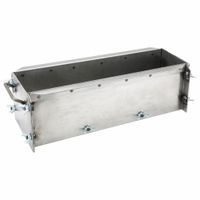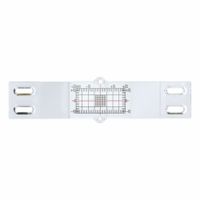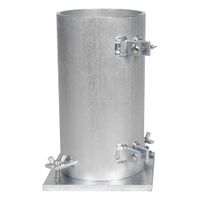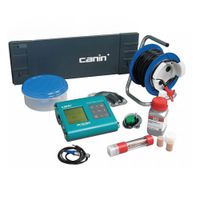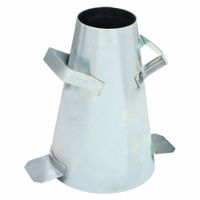Call +(254) 703 030 000 / 751 483 999 / 721 704 777
- Home
- Test Instruments
- Concrete Asphalt Pavement Testing
- Concrete Testing
.....Read More
Frequently Asked Questions
What is the purpose of concrete testing equipment?
The purpose of concrete testing equipment is to ensure the quality, durability, and safety of concrete structures. These tools and devices are used to assess various properties of concrete, both in its fresh and hardened states, to ensure it meets the required standards and specifications for construction projects.
1. **Quality Control**: Concrete testing equipment helps in maintaining the quality of concrete by measuring its properties such as workability, strength, and consistency. This ensures that the concrete mix is suitable for the intended application and meets the design requirements.
2. **Strength Assessment**: Equipment like compression testing machines are used to determine the compressive strength of concrete, which is a critical factor in structural integrity. This helps in verifying that the concrete can withstand the loads and stresses it will encounter during its service life.
3. **Durability Evaluation**: Tests for permeability, freeze-thaw resistance, and chemical resistance are conducted to assess the durability of concrete. This ensures that the concrete will perform well under environmental conditions and have a long service life.
4. **Safety Assurance**: By ensuring that concrete meets the necessary standards, testing equipment helps in preventing structural failures, which can lead to accidents and loss of life. It ensures that the concrete structure is safe for use.
5. **Compliance with Standards**: Concrete testing equipment is used to ensure compliance with local and international standards and regulations. This is crucial for legal and contractual obligations in construction projects.
6. **Problem Diagnosis**: In case of any issues with concrete structures, testing equipment can help diagnose problems such as cracks, voids, or other defects, allowing for timely repairs and maintenance.
Overall, concrete testing equipment is essential for ensuring the reliability and safety of concrete structures, thereby protecting investments and lives.
How do cylinder molds and their accessories aid in concrete testing?
Cylinder molds and their accessories are essential tools in concrete testing, primarily used to assess the compressive strength of concrete. These molds are typically made of plastic, steel, or cast iron and are designed to form cylindrical concrete specimens, usually 150 mm in diameter and 300 mm in height, although other sizes are also used depending on the testing standards.
The process begins with fresh concrete being poured into the cylinder molds in layers, with each layer being compacted using a tamping rod or a vibrating table to eliminate air pockets and ensure uniform density. This compaction is crucial for obtaining accurate test results, as voids can significantly affect the strength measurements.
Once the concrete is set, the molds are removed, and the specimens are cured under controlled conditions, typically in a moist environment, to simulate the curing process of concrete in real-world applications. Proper curing is vital as it influences the hydration process, which directly impacts the concrete's strength development.
After the curing period, the concrete cylinders are subjected to compressive strength tests using a compression testing machine. The results provide valuable data on the concrete's load-bearing capacity, helping engineers and construction professionals determine if the concrete mix meets the required specifications and standards.
Accessories such as capping plates, sulfur capping compounds, and neoprene pads are used to ensure the ends of the cylinders are smooth and parallel, which is necessary for accurate testing. These accessories help distribute the load evenly across the specimen during testing, preventing premature failure and ensuring reliable results.
In summary, cylinder molds and their accessories are crucial for producing standardized concrete specimens, facilitating accurate compressive strength testing, and ensuring the quality and safety of concrete structures.
What is the significance of air entrapment equipment in concrete testing?
Air entrapment equipment in concrete testing is crucial for assessing the air content in fresh concrete, which significantly impacts the material's durability, workability, and strength. The primary significance of this equipment lies in its ability to measure the volume of air voids within the concrete mix. Proper air content is essential for enhancing the freeze-thaw resistance of concrete, especially in climates subject to temperature fluctuations. Entrapped air provides space for water to expand upon freezing, reducing internal stress and preventing cracking.
Air content also influences the workability of concrete. Adequate air entrainment improves the mix's cohesiveness, making it easier to handle and place, while reducing segregation and bleeding. This is particularly important for achieving a smooth finish and ensuring uniformity in the final structure.
Moreover, air entrapment equipment helps in quality control by ensuring that the concrete mix meets specified standards and performance criteria. By accurately measuring air content, engineers and contractors can adjust the mix design to achieve the desired properties, such as strength and durability, while minimizing the risk of defects.
In summary, air entrapment equipment is vital for ensuring the longevity and performance of concrete structures. It provides critical data that informs mix design adjustments, enhances freeze-thaw resistance, improves workability, and ensures compliance with construction standards.
How do crack monitors and caliper marks function in concrete testing?
Crack monitors and caliper marks are essential tools in assessing the structural integrity of concrete by tracking the development and progression of cracks.
Crack monitors are devices used to measure the width and movement of cracks over time. They typically consist of two overlapping plates, one fixed to each side of the crack. As the crack widens or narrows, the plates shift relative to each other. This movement is recorded on a scale or dial, allowing for precise measurement of changes in crack width. Crack monitors can be simple mechanical devices or more advanced digital systems that provide continuous monitoring and data logging. They help engineers determine whether a crack is stable or if it is expanding, which could indicate structural issues.
Caliper marks, on the other hand, involve using calipers to manually measure the width of a crack at specific intervals. This method requires marking the crack at several points and using a caliper to measure the distance between the marks. The measurements are recorded over time to track any changes. While caliper marks are less sophisticated than crack monitors, they are a cost-effective and straightforward method for periodic monitoring.
Both methods are crucial for evaluating the safety and durability of concrete structures. They provide data that can inform maintenance decisions, repair strategies, and safety assessments. By understanding the behavior of cracks, engineers can predict potential failures and take preventive measures to ensure the longevity and safety of the structure.
What is the process of slump testing and why is it important?
Slump testing is a method used to measure the consistency and workability of fresh concrete before it sets. The process involves filling a slump cone, which is a frustum of a cone with a base diameter of 200 mm, a top diameter of 100 mm, and a height of 300 mm, with concrete in three layers. Each layer is tamped 25 times with a standard tamping rod to ensure compaction. After filling, the cone is carefully lifted vertically, allowing the concrete to slump. The decrease in height of the concrete from the original height of the cone is measured, which is known as the slump.
The slump test is important for several reasons:
1. **Quality Control**: It provides a quick and simple method to assess the consistency of concrete, ensuring it meets the required specifications for a particular project.
2. **Workability Assessment**: The test helps determine the workability of the concrete mix, which affects how easily it can be mixed, placed, and finished.
3. **Uniformity Check**: It helps in checking the uniformity of different batches of concrete, ensuring consistency in construction.
4. **Water-Cement Ratio**: The test indirectly indicates the water-cement ratio, which is crucial for the strength and durability of the concrete.
5. **Predicting Performance**: By assessing the slump, engineers can predict the performance of the concrete in terms of strength and durability.
6. **Adjustments**: If the slump is outside the desired range, adjustments can be made to the mix before it is used, preventing potential structural issues.
Overall, slump testing is a vital step in concrete construction, ensuring that the material used is of the right quality and consistency for the intended application.
How do rebar locators and corrosion locators work in concrete testing?
Rebar locators and corrosion locators are essential tools in concrete testing, used to assess the integrity and durability of reinforced concrete structures.
Rebar locators, also known as cover meters, work by using electromagnetic fields to detect the presence and position of steel reinforcement bars (rebar) within concrete. They typically consist of a probe and a display unit. The probe emits an electromagnetic field, which induces eddy currents in the metallic rebar. These currents generate their own magnetic field, which is detected by the probe. The device then calculates the location, depth, and sometimes the diameter of the rebar based on the strength and characteristics of the detected magnetic field. This information is displayed on the unit, allowing for precise mapping of rebar placement without damaging the concrete.
Corrosion locators, on the other hand, are used to assess the corrosion potential of rebar within concrete. They often employ half-cell potential measurements, which involve placing a reference electrode on the concrete surface and measuring the electrical potential difference between the electrode and the embedded rebar. This potential difference indicates the likelihood of corrosion activity. A more negative potential suggests a higher risk of corrosion. Some advanced corrosion locators also use techniques like linear polarization resistance or electrochemical impedance spectroscopy to provide more detailed assessments of corrosion rates and conditions.
Both tools are non-destructive, providing critical data for maintenance and repair decisions without compromising the structural integrity of the concrete. They help in ensuring the longevity and safety of concrete structures by identifying potential issues before they lead to significant damage.
What role do maturity meters play in the concrete curing process?
Maturity meters play a crucial role in the concrete curing process by providing a reliable and efficient method to estimate the in-place strength of concrete. These devices measure the temperature history of the concrete and use this data to calculate the maturity index, which correlates with the strength development of the concrete over time.
The maturity method is based on the principle that concrete strength is a function of its age and temperature history. By continuously monitoring the temperature of the concrete, maturity meters can provide real-time data that helps in predicting the strength gain of the concrete. This allows for more accurate scheduling of construction activities, such as formwork removal, post-tensioning, and opening to traffic, thereby optimizing the construction timeline and improving safety.
Maturity meters eliminate the need for extensive sampling and testing of concrete specimens, which can be time-consuming and may not accurately represent the in-place conditions. By using maturity meters, construction teams can make informed decisions based on actual data from the site, reducing the risk of premature loading or delayed construction activities.
Additionally, maturity meters help in quality control by ensuring that the concrete has reached the desired strength before proceeding with subsequent construction steps. This is particularly important in projects with tight schedules or in adverse weather conditions where traditional curing methods may be less effective.
Overall, maturity meters enhance the efficiency, safety, and quality of the concrete curing process, providing a cost-effective solution for modern construction projects.

